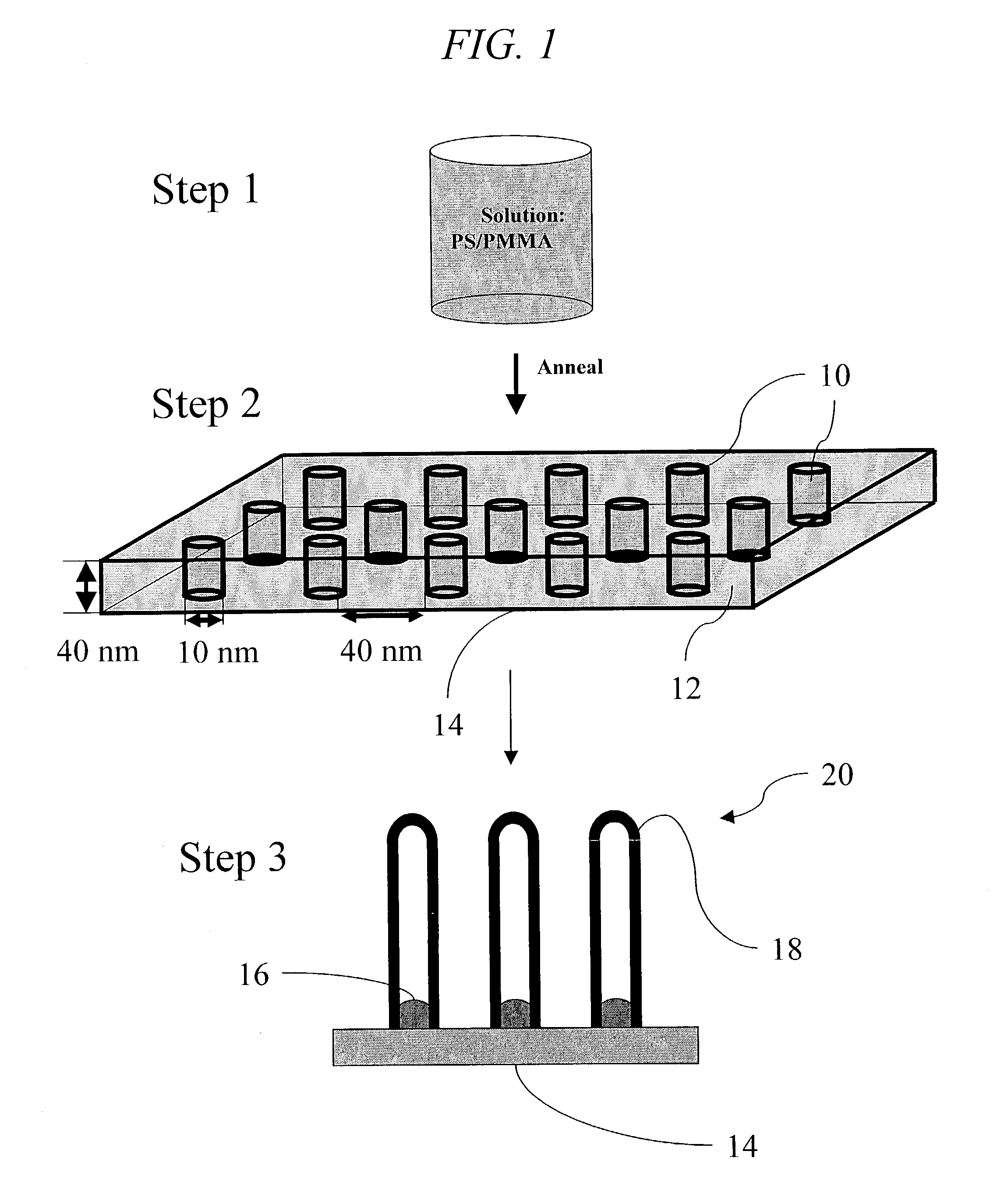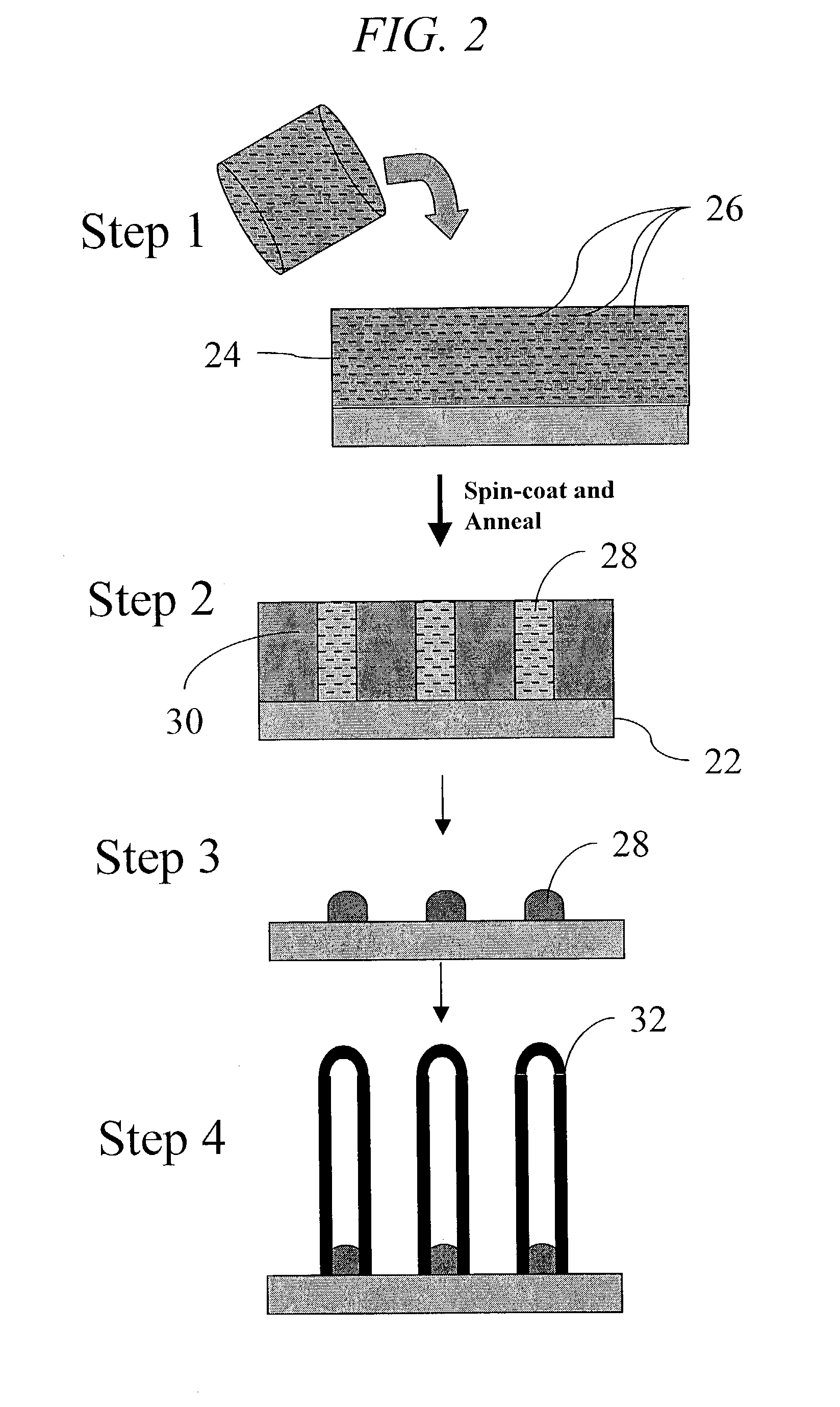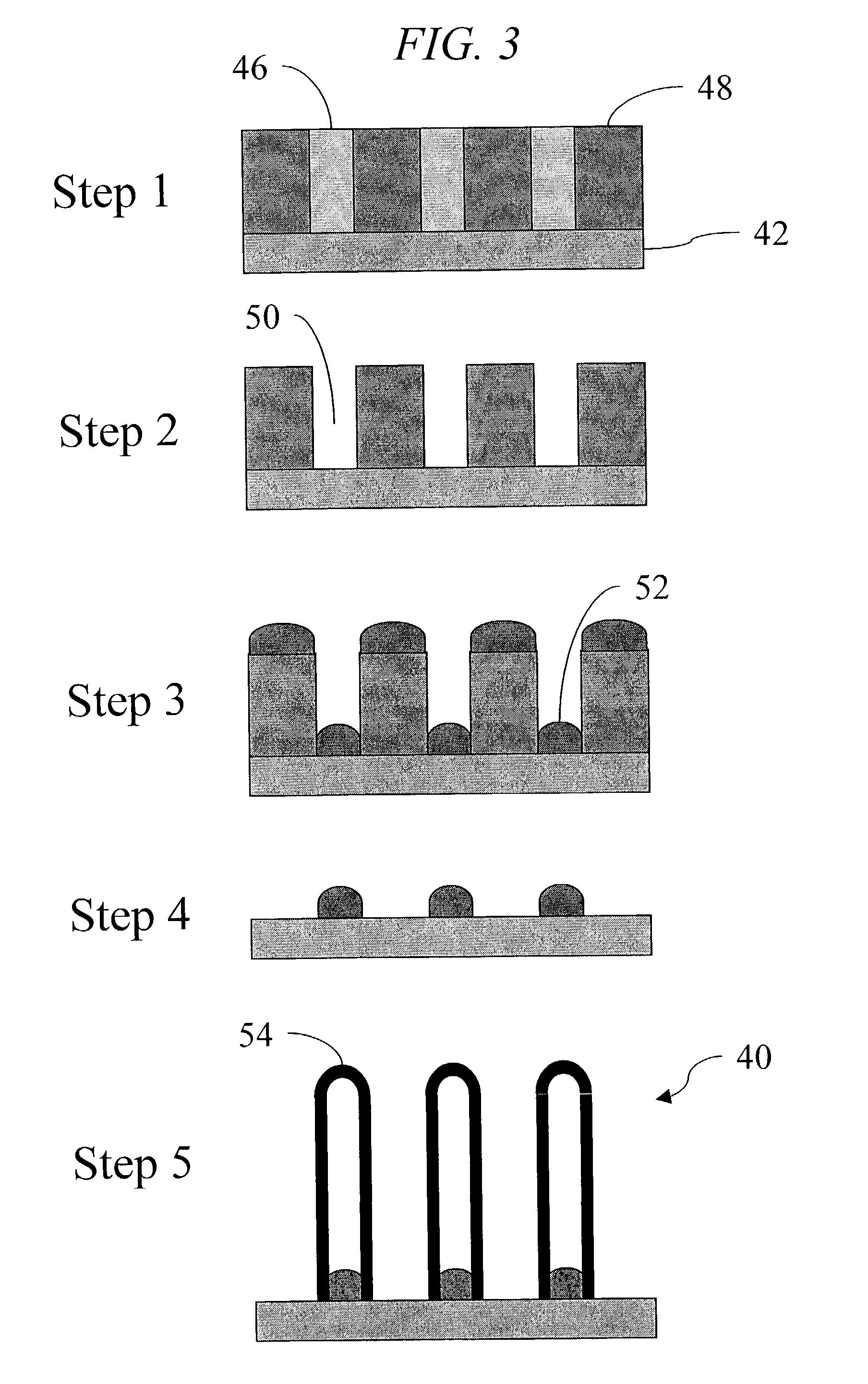Method of producing regular arrays of nano-scale objects using nano-structured block-copolymeric materials
a technology of copolymer materials and nano-scale objects, which is applied in the direction of carbonsing rags, aligned nanotubes, coatings, etc., can solve the problems of limiting the efficiency of such gel separation, limiting their utility, and wide size distribution
- Summary
- Abstract
- Description
- Claims
- Application Information
AI Technical Summary
Benefits of technology
Problems solved by technology
Method used
Image
Examples
Embodiment Construction
[0035]The present invention is directed to a method of forming a periodic array of nano-scale objects, such as carbon nanotubes from self-assembling block copolymeric materials.
[0036]A generic embodiment of the process for forming ordered carbon nanotube arrays according to the current invention is shown schematically in FIG. 1. Although the materials used and the exact steps may vary, as shown, there are three general steps in the method for forming nano-arrays according to the present invention: 1) depositing the a block copolymeric material 10 and 12 on a substrate 14 to form an ordered meso-scale structure array of the polymer materials; 2) formation of the catalytic metal dots 16 based on the meso-scale structure; and 3) growth of the carbon nanotubes 18 on the catalytic dots to form an ordered array 20 of carbon nanotubes.
[0037]The proposed method makes use of the fact that a certain class of molecules, called block copolymers, can spontaneously self-assemble into regular arra...
PUM
| Property | Measurement | Unit |
|---|---|---|
| temperature | aaaaa | aaaaa |
| size | aaaaa | aaaaa |
| diameters | aaaaa | aaaaa |
Abstract
Description
Claims
Application Information
 Login to View More
Login to View More - R&D
- Intellectual Property
- Life Sciences
- Materials
- Tech Scout
- Unparalleled Data Quality
- Higher Quality Content
- 60% Fewer Hallucinations
Browse by: Latest US Patents, China's latest patents, Technical Efficacy Thesaurus, Application Domain, Technology Topic, Popular Technical Reports.
© 2025 PatSnap. All rights reserved.Legal|Privacy policy|Modern Slavery Act Transparency Statement|Sitemap|About US| Contact US: help@patsnap.com



